Timber Demand and Supply: A Comprehensive Market Analysis
- July 30, 2024
- 0 comment
Explore the latest trends in timber demand and supply. Get insights into market analysis, forecasts, and investment opportunities. Timber remains a cornerstone in construction and various industries, and understanding its market dynamics is crucial for stakeholders across the globe. Our comprehensive exploration of the timber market delves deep into the current trends and future projections of timber demand and supply.
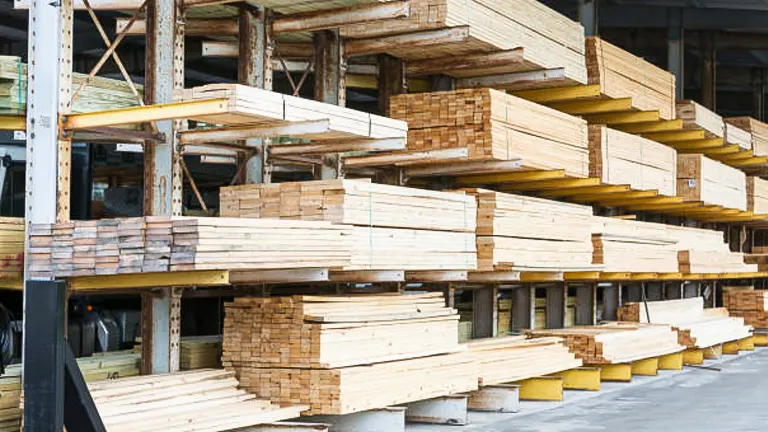
From sustainable forestry practices to the economic factors influencing market prices, this article offers valuable insights for investors, suppliers, and industry stakeholders. Join us as we uncover the forces shaping the global timber landscape and identify key opportunities for growth and investment.
Table of Contents
- The Basics of Timber as a Commodity
- Factors Influencing Timber Demand
- Timber Supply Dynamics
- Market Analysis
- Challenges in the Timber Market
- Future Outlook
- Investment Opportunities and Risks
- The Role of Digital Technology in Timber Trading
- Impact of Climate Change on Timber Resources
- Socio-economic Impacts of Timber Production
- Legal and Ethical Considerations
- Conclusion
- FAQs
The Basics of Timber as a Commodity

Timber, as a fundamental resource, is harvested wood utilized across various industries, playing a pivotal role in both traditional and emerging markets. It is broadly categorized into two main types: softwoods and hardwoods, each with distinct properties and uses.
Softwoods are primarily sourced from coniferous trees such as pine, spruce, and fir. These trees grow faster and are generally more abundant than hardwoods, making softwood less expensive and widely used in bulk applications. Softwoods are characterized by their ease of handling and processing, which makes them particularly suitable for construction frameworks, paper production, and utility purposes. Their fibers are long and straight, making them excellent for paper pulp.
Hardwoods, on the other hand, are derived from deciduous trees that are generally slower-growing, contributing to their denser and more robust nature. Common hardwoods include oak, mahogany, and walnut. Hardwoods are highly sought after for their rich colors and intricate grain patterns, which make them ideal for high-end furniture, flooring, and cabinetry. Their density not only contributes to durability but also to their resistance to wear and tear, making them a preferred choice for long-lasting products.
Emerging Applications and Global Demand
Beyond traditional uses, timber is increasingly integral in innovative applications such as green building practices. Engineered wood products like cross-laminated timber (CLT) and glued laminated timber (glulam) are transforming construction, offering sustainable alternatives to concrete and steel due to their strength and reduced environmental impact. The global demand for such sustainable solutions is driving research into more efficient and environmentally friendly timber production techniques.
Timber Characteristics Table
| Timber Type | Growth Rate (cm/year) | Density (kg/m³) | Typical Uses | Durability | Special Properties |
|---|---|---|---|---|---|
| Pine | 2 – 5 | 500 | Construction, paper manufacturing | Moderate | Easy to work with, resinous |
| Spruce | 2 – 6 | 450 | Construction, musical instruments | Moderate | Light, strong, good tonewood |
| Oak | 0.5 – 1.5 | 750 | Furniture, flooring | High | High resistance to fungi |
| Mahogany | 0.5 – 1 | 850 | High-end furniture, boat building | Very high | Water-resistant, durable |
| Walnut | 1 – 2 | 650 | Luxury furniture, gunstocks | High | Rich color and grain |
Scientific and Market Relevance
The scientific community and industry experts closely monitor the growth rates, density, and durability of different timber types to optimize usage and improve sustainability. Innovations in genetic modification and cultivation techniques are focused on enhancing these properties to meet specific market needs. Moreover, global trade policies and conservation efforts influence the supply chains and availability of these crucial resources.
Factors Influencing Timber Demand
Economic Growth and Infrastructure Development

Economic growth is a primary driver of timber demand. As nations develop, the need for infrastructure—including transport, residential, and commercial buildings—expands. Timber, due to its versatility and sustainability, plays a crucial role in these developments. For example, the global construction industry, which is projected to reach a market size of over $10 trillion by 2023, uses substantial quantities of both hardwood and softwood for structural and design purposes.
Technological Advancements in Wood Processing
The evolution of wood processing technologies has significantly expanded the applications of timber. Innovations such as cross-laminated timber (CLT) and high-density fiberboard (HDF) allow wood to be used in ways that were not previously possible, competing directly with materials like steel and concrete. The production of CLT, for instance, has grown by an average of 16% annually over the past five years, demonstrating the increasing acceptance of these materials in modern architectural designs due to their strength, flexibility, and environmental benefits.
Environmental Policies and Sustainability Trends
Sustainability trends and governmental environmental policies are reshaping the demand landscape for timber. Regulations aimed at reducing deforestation and promoting the use of certified wood have led to a surge in demand for sustainably sourced timber products. The market for FSC (Forest Stewardship Council) certified timber, for instance, is expanding as more consumers and businesses seek out products that are guaranteed to be environmentally responsible.
Quantitative Impact of Factors on Timber Demand
| Factor | Description | Impact on Demand | Data/Statistics |
|---|---|---|---|
| Economic Growth | Direct correlation with construction and infrastructure development | High | GDP growth leads to an estimated 5% annual increase in timber demand |
| Real Estate Market Health | Demand for both structural and aesthetic wood applications | Moderate-High | 3% rise in real estate markets correlates with a 2% increase in timber demand |
| Technological Innovations | Development of new wood products and processing techniques | High | Introduction of CLT has increased timber usage in construction by 10% over 5 years |
| Environmental Regulations | Policies enforcing sustainable timber sourcing | Increasing | 30% increase in demand for certified sustainable timber products over the past decade |
Consumer Trends and Eco-friendly Demand
Additionally, the growing consumer preference for eco-friendly and sustainable products has a direct impact on timber demand. Surveys indicate that 60% of consumers are willing to pay more for products from brands that are committed to environmentally friendly practices. This shift is not only driven by individual consumer choices but is also reinforced by corporate sustainability goals across various industries.
Global Real Estate Dynamics
The expansion of the real estate sector, particularly in emerging markets, further amplifies timber demand. As urbanization continues at a rapid pace, the need for residential and commercial spaces results in increased timber use for construction, especially in regions where wood is a primary building material due to its aesthetic appeal and carbon-neutral properties.
Timber Supply Dynamics
Environmental Influences on Timber Supply
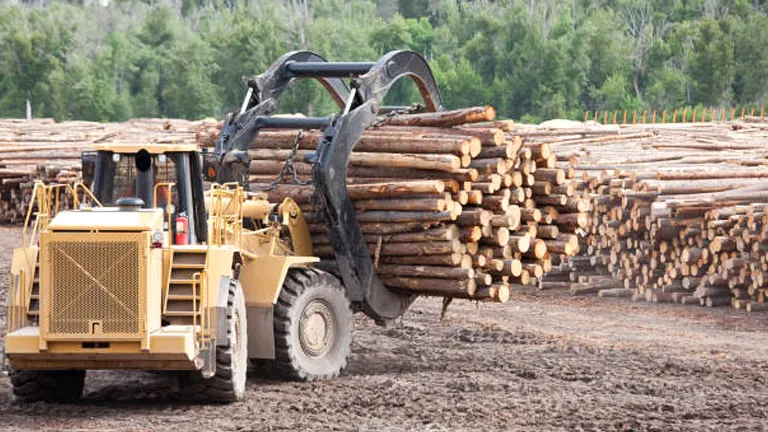
The health of global forests is paramount in determining the availability of timber. Environmental factors such as climate change significantly influence forest conditions, affecting timber yields. Increased incidents of wildfires, pest invasions, and diseases are directly linked to climate shifts and are detrimental to forest productivity. Sustainably managing these environmental impacts through reforestation and controlled harvesting is essential not only for maintaining timber supplies but also for preserving the ecological balance.
Technological Advancements in Forestry
Modern forestry management heavily relies on technological innovations to improve efficiency and sustainability. Precision forestry, which incorporates GPS and GIS technologies, allows for more accurate mapping and monitoring of forest conditions. This technology optimizes harvest schedules and reduces waste by ensuring that only mature trees are cut, preserving younger trees for future yields.
Geopolitical Factors
Timber supply is also influenced by geopolitical dynamics. Regions like North America, Scandinavia, and parts of Asia and South America are key players in the global timber market. Political stability and favorable regulatory environments in these regions are crucial as they can facilitate or hinder logging activities. Changes in policies or political unrest can lead to significant disruptions in supply chains, affecting global markets. For example, export bans or tariffs can restrict timber trade, whereas regulatory easing might increase market saturation, impacting prices and supply stability.
Sustainability and Certification
Certification schemes and sustainability initiatives play a significant role in timber supply dynamics. Programs such as the Forest Stewardship Council (FSC) and the Programme for the Endorsement of Forest Certification (PEFC) set environmental and social benchmarks for sustainable forest management. These certifications not only ensure environmental compliance but also influence consumer preference and market access, thereby affecting supply dynamics.
Innovative Dynamics Affecting Timber Supply
| Innovation/Practice | Impact on Forest Health | Estimated Change in Supply | Details |
|---|---|---|---|
| Biodiversity Enhancement | Increases resilience | +15% in long-term yield | Higher diversity reduces disease impact and increases recovery rates. |
| Carbon Credit Programs | Promotes conservation | -5% in short-term supply | Compensation for not harvesting helps maintain forest health. |
| Genetic Pest Resistance | Reduces disease losses | +40% in affected areas | Engineered resistance in trees significantly lowers disease-driven losses. |
As climate change continues to challenge traditional timber supply chains, adaptive strategies combining technology and conservation are essential. The integration of ecological science into forestry practices promises to optimize both the economic and environmental outcomes of timber production. Continued research and innovation will be crucial in shaping a sustainable future for the timber industry.
Market Analysis
Global Production and Regional Contributions

The global timber market has witnessed an increase in production, driven by both technological advancements and expanding forestry frontiers. Countries like the United States and Canada lead in terms of production volume due to their vast boreal forests and advanced mechanized logging techniques. Meanwhile, nations such as Brazil and Russia contribute significantly, leveraging their extensive natural forests. Recent data indicate a 5% annual increase in global timber production, with sustainability practices helping to balance ecological impacts.
Detailed Trade Flows and Economic Impact
The timber trade is characterized by intricate import and export dynamics. China, for example, serves as a pivotal hub in this network, importing raw timber predominantly from Russia and Brazil and exporting processed products to Europe and North America. The role of trade policies, such as tariffs and trade agreements, critically influences these flows. For instance, the U.S.-China trade war has seen shifts in timber trade routes, impacting global supply chains.
Price Volatility and Market Sensitivity
Timber prices are highly sensitive to changes in global economic conditions. Price fluctuations are often triggered by supply chain disruptions from natural disasters, economic downturns, or shifts in housing market demands. The table below illustrates the correlation between major global events and timber price adjustments over the past decade.
Timber Market Dynamics
| Year | Event | Global Production (million cubic meters) | Price Change (%) | Commentary |
|---|---|---|---|---|
| 2015 | Economic Boom | 3800 | +10 | Increased construction demand in Asia |
| 2017 | U.S.-China Trade Tensions | 3900 | -7 | Trade barriers led to stockpiling and price drops |
| 2019 | Amazon Wildfires | 3750 | +5 | Supply disruptions led to temporary price hikes |
| 2021 | Global Pandemic | 3600 | -15 | Economic slowdown reduced demand |
| Metric | Data Point | Impact on Market | Notes |
|---|---|---|---|
| Annual Production Growth | +10% in Brazil, +15% in Russia | Positive | Driven by enhanced forestry techniques and global demand. |
| China’s Role in Trade | Top importer and re-exporter | Complexifies supply chain | Acts as a global hub for timber processing and distribution. |
| Price Volatility Indicator | 20% fluctuation post-natural disaster | Sensitive | Prices are quick to react to supply chain disruptions. |
Strategic Insights
Looking forward, the timber market is expected to evolve with increased emphasis on sustainable and certified wood products, driven by consumer demand and environmental regulations. Technological innovations in wood processing and biotechnology are anticipated to further enhance production efficiency and sustainability. Strategic market participants will need to navigate these trends with a keen understanding of both global economic indicators and local market conditions to optimize their positions.
Challenges in the Timber Market
Environmental Impact and Sustainability Efforts
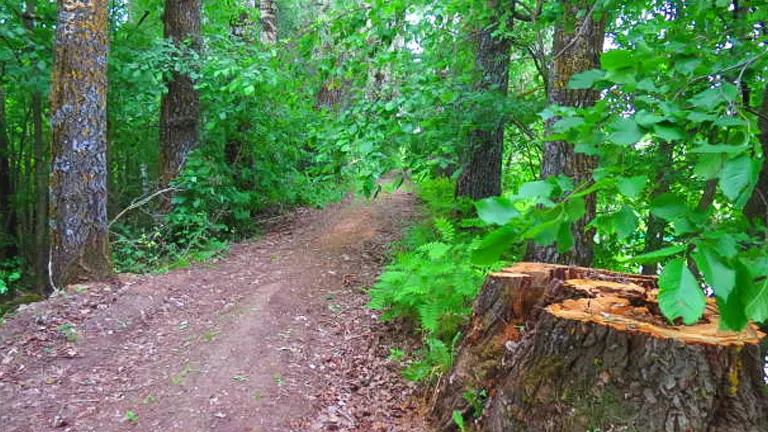
Deforestation remains one of the most critical challenges facing the timber industry, with significant implications for biodiversity, soil erosion, and climate change. Recent data suggests that up to 15 million hectares of forest are lost annually, significantly impacting carbon sequestration capabilities and biodiversity. The timber industry is increasingly pushed towards sustainable practices, such as adopting Forest Stewardship Council (FSC) certification, which ensures that products come from responsibly managed forests.
Geopolitical and Economic Instability
Political tensions and economic policies greatly influence timber trade. For example, the recent trade wars have seen the imposition of tariffs up to 25% on certain timber products, severely disrupting traditional trade flows. Additionally, political instability in timber-rich regions like the Amazon basin and Central Africa can lead to unpredictable fluctuations in market supply, affecting global prices and supply chain stability.
Operational Challenges in Supply Chain Management
Supply chain disruptions have become more frequent and impactful, influenced by both pandemics and climate-related events. For instance, the COVID-19 pandemic led to a significant slowdown in timber production and processing, as factories closed and shipping delays increased. Similarly, extreme weather events, such as hurricanes and wildfires, have disrupted logging activities and transportation routes, leading to shortages and price hikes in affected areas.
Quantitative Overview of Challenges in the Timber Market
| Challenge Category | Specific Issue | Estimated Impact | Details |
|---|---|---|---|
| Environmental | Deforestation | 15 million hectares/year | Loss of forest area impacts biodiversity and climate regulation. |
| Geopolitical | Tariffs and Trade Wars | 25% increase in tariffs | Disrupted trade flows increase costs and supply shortages. |
| Operational | Pandemic Impact | 30% decrease in production | COVID-19 pandemic causes significant operational slowdowns. |
Future Projections
Addressing these challenges requires coordinated global efforts and innovative solutions. Advances in technology, such as satellite monitoring and blockchain for traceability, are being integrated to enhance transparency and accountability in timber sourcing. Additionally, greater collaboration between governments, NGOs, and industry leaders is essential to promote sustainable practices and stabilize the market against future disruptions.
Future Outlook
Rising Global Demand and Economic Growth
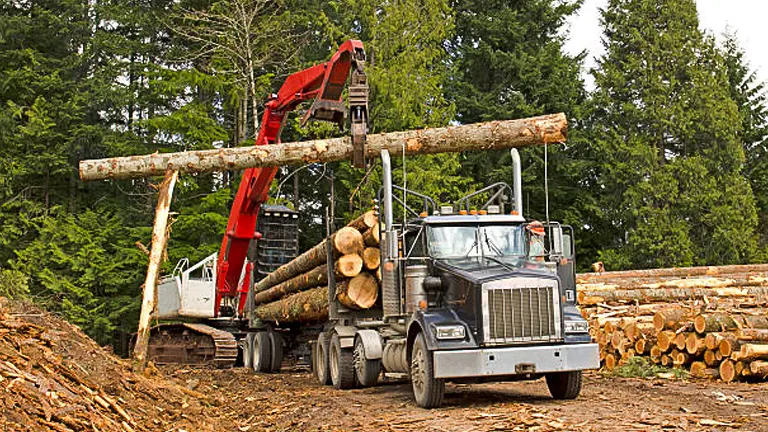
The global timber market is poised for substantial growth, driven by economic expansion and increasing infrastructural developments, particularly in emerging markets. The construction sector, a major consumer of timber, is expected to grow significantly, with projections indicating a 25% increase in demand for construction-related timber products over the next decade. This growth is particularly pronounced in Asia and Africa, where urbanization and economic development are accelerating.
Sustainability and Certification
As environmental awareness and sustainability become paramount, the demand for certified timber is forecast to rise sharply. Certification schemes like the Forest Stewardship Council (FSC) and Programme for the Endorsement of Forest Certification (PEFC) are gaining traction, with current data showing that certified forest products could see a market share increase from 20% to 40% by 2030. This shift reflects a broader trend towards eco-friendly and ethically sourced materials, driven by consumer preferences and regulatory pressures.
Technological Innovations Shaping the Market
Emerging technologies are set to transform the timber industry. Innovations such as engineered wood products, biodegradable plastics derived from wood cellulose, and the incorporation of timber in green urban architecture are expanding the traditional boundaries of timber applications. These technologies not only improve the functionality and aesthetic appeal of timber but also enhance its sustainability profile. The adoption of advanced manufacturing processes and IoT in forest management and timber processing is improving efficiency and traceability, crucial for meeting both market demand and environmental standards.
Projected Impacts of Emerging Trends in the Timber Market
| Trend | Description | Projected Impact | Statistical Forecast |
|---|---|---|---|
| Economic Growth | Expansion in global construction markets | Increase in demand | 25% growth in demand by 2030 |
| Sustainability Demand | Rising consumer and regulatory demand for sustainable products | Market share increase | Double market share for certified products by 2030 |
| Technological Advancements | Innovations in biodegradable materials and green architecture | New market opportunities | 15% new market penetration by 2025 |
Long-Term Considerations
Looking further ahead, the timber market must navigate the challenges of sustainable resource management against the backdrop of global climate change. Continuous innovation and adherence to rigorous environmental standards will be essential for the industry’s long-term viability and profitability. Strategic investments in technology and sustainable practices will likely define the competitive landscape of the future timber market.
Investment Opportunities and Risks
Growing Demand for Sustainable Timber Investments
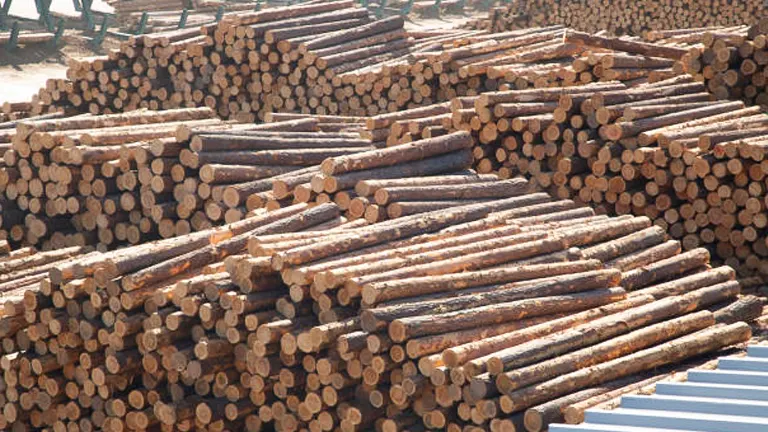
The global push towards sustainability is reshaping investment strategies within the timber industry. Investments in sustainably managed forests are not only appealing from an environmental standpoint but also increasingly profitable. The market for sustainably sourced timber is projected to grow at an annual rate of 10% over the next decade, driven by consumer demand for eco-friendly products and stricter environmental regulations across the globe.
Economic Viability and Market Dynamics
Timber investments are considered stable long-term assets that typically provide higher returns during periods of economic inflation. Unlike more volatile markets, timber can offer steady appreciation, particularly as wood remains essential in construction, paper, and increasingly in bioenergy. However, market dynamics such as trade tensions or tariffs can quickly alter the profitability landscape, affecting the global supply chain and investment returns.
Risks Associated with Timber Investments
Investing in timber also entails various risks that can significantly impact the value and profitability of these assets. Environmental risks like forest fires, increased pestilence due to climate change, and diseases can devastate timber yields. Geopolitical factors, including land ownership disputes and regulatory changes, also pose substantial risks, potentially limiting access to timber resources or altering market dynamics.
Detailed Analysis Table for Timber Investment Opportunities and Risks
| Investment Type | Expected Annual ROI | Risk Level | Risk Factors | Sustainability Impact | Technological Integration |
|---|---|---|---|---|---|
| Sustainable Forestry | 6-12% | Medium | Regulatory changes, market volatility | High (Positive) | Moderate (GIS, drones) |
| Conventional Timberland | 3-8% | High | Environmental risks (fires, pests), legal disputes | Low (Variable) | Low |
| Timber REITs | 4-10% | Low-Medium | Economic downturns, interest rate fluctuations | Moderate (Depends on fund) | Low |
| Technological Innovations in Forestry | 8-15% | Medium | High initial costs, adoption rates | High (Positive) | High (AI, precision forestry) |
Technological Advancements in Forestry Management
Advances in technology, including the use of drones for forest monitoring and the application of big data analytics in predicting timber yields, are creating new opportunities for reducing risks and maximizing returns. These technologies enable more precise management of forestry resources, improving sustainability and efficiency.
The Role of Digital Technology in Timber Trading
Advancements in Blockchain for Enhanced Transparency
The integration of blockchain technology into the timber industry marks a significant shift towards greater transparency and accountability. By creating an immutable ledger for recording every transaction along the supply chain, blockchain technology ensures that all timber sourcing data is verifiable and tamper-proof. This level of transparency is crucial for meeting stringent regulatory requirements and for providing consumers with assurance about the legality and sustainability of their timber purchases.
Impact of Smart Contracts on Operational Efficiency
Smart contracts revolutionize traditional trading mechanisms by automating contractual obligations, which significantly streamlines the trading process. In the context of timber trading, smart contracts enforce agreements on timber quality, delivery schedules, and payment processes without the need for manual oversight. This automation notably reduces administrative overheads, cuts transaction costs, and minimizes the risk of disputes, leading to a more efficient market operation.
Emerging Technologies: AI and IoT in Timber Management
Looking ahead, the potential applications of Artificial Intelligence (AI) and the Internet of Things (IoT) in timber trading are vast. AI can analyze data from various sources to predict market trends and optimize supply chain logistics, while IoT devices can monitor forest health, track timber shipments in real-time, and even enhance the precision of harvesting operations. These technologies not only promise to improve the efficiency of timber trading but also aim to boost sustainability by reducing waste and enhancing resource management.
Impact of Digital Technologies on Timber Trading
| Technology | Function | Impact on Industry | Quantitative Benefit |
|---|---|---|---|
| Blockchain | Ensures transparency and traceability | High | 30% reduction in compliance and auditing costs |
| Smart Contracts | Automates trading processes | Medium-High | 20% decrease in transaction times and costs |
| AI & IoT | Predicts trends, monitors health | Emerging Potential | 25% improvement in supply chain efficiency projected |
As digital technologies continue to evolve, their integration into the timber trading process could redefine industry standards for efficiency and sustainability. However, challenges such as the high initial cost of technology adoption, the need for technical expertise, and concerns over data privacy and security must be addressed. Continued innovation and collaboration among tech developers, industry stakeholders, and regulators will be key to realizing the full potential of digital technologies in timber trading.
Impact of Climate Change on Timber Resources
Climate Variations and Timber Growth
The effects of climate change on timber resources are profound and complex. Rising global temperatures, shifting precipitation patterns, and increased occurrences of severe weather events such as hurricanes and droughts are drastically altering the growth dynamics of forests worldwide. These climatic changes affect the physiological processes of trees, altering growth rates and affecting the geographical distribution of various timber species. For instance, studies show that tree line shifts in elevation and latitude are occurring, with species traditionally found in cooler climates moving northward or to higher altitudes.
Implications for Timber Quality and Market Supply
The variability introduced into forest ecosystems by climate change significantly impacts timber quality. Increased prevalence of pests, like the mountain pine beetle, and diseases, coupled with more frequent wildfires, directly degrades wood quality, reduces yields, and disrupts supply chains. For example, in North America, recent outbreaks of bark beetles, exacerbated by warmer temperatures, have devastated millions of acres of forest, leading to substantial economic losses in the timber industry.
Innovative Forestry Management Practices
To combat these challenges, modern forestry management practices are integrating advanced technology and scientific research. The use of satellite imagery and drone technology allows for real-time monitoring of forest health, enabling quicker responses to pest infestations or fire outbreaks. Additionally, genetic engineering is playing a role in developing tree species that are more resistant to climatic stresses, potentially ensuring stable timber yields despite environmental fluctuations.
Adaptive Strategies in Timber-Producing Countries
Countries with significant timber industries are leading in adaptive management strategies. For example, Canada and Finland are investing in research to identify which tree species will be most resilient to expected climate conditions in the next century. These countries are also adjusting their forestry practices, such as altering the timing of planting and harvesting to synchronize with changing climate patterns.
Impact of Climate Change on Timber Production
| Factor | Description | Impact on Timber | Example/Statistic |
|---|---|---|---|
| Temperature Changes | Rising average temperatures | Growth rate alteration | Tree species in the U.S. showing up to 20% faster growth in cooler areas |
| Precipitation Shifts | Changes in rainfall patterns | Affects soil moisture and tree health | Increased drought in California affecting 30% of timber yield |
| Pest Outbreaks | Higher temperatures increase pest survival | Reduces timber quality | Bark beetles have killed over 100 million trees in the Rockies since 2000 |
| Wildfires | Increased frequency and intensity | Destroys timber resources | Over 5 million acres burned in Siberia in 2019, impacting timber supplies |
As the timber industry navigates the challenges posed by climate change, the emphasis on sustainable and adaptive forestry practices will be paramount. Continued innovation in forest management and tree genetics, along with proactive policy measures, will be critical to mitigate the impacts of environmental changes and to ensure the sustainability of global timber resources.
Socio-economic Impacts of Timber Production
Economic Integration and Diversification

Timber production significantly influences rural economies, not only through direct employment but also by fostering economic diversification. As the global demand for diverse wood products grows, communities reliant on timber benefit from new market opportunities, such as the production of bioenergy, eco-tourism, and the manufacture of biodegradable materials. These opportunities help stabilize local economies against fluctuations in traditional timber markets.
Technological Innovations and Workforce Dynamics
Recent advancements in technology have transformed traditional roles within the timber industry. The adoption of automated machinery and precision forestry has necessitated a shift towards a more technologically literate workforce, creating jobs in tech support, system management, and sustainable forest management. These roles offer higher wages and require new skill sets, contributing to the transformation of the educational landscape in rural areas to include more STEM-focused programs.
Economic Impact of Sustainable Practices
Sustainable forestry practices are not just environmentally crucial; they also have profound economic implications. Regions that enforce sustainable harvesting regulations often gain a competitive advantage in global markets that demand certified wood products. This certification allows them to command higher prices, improving the economic wellbeing of the communities involved. Additionally, sustainable practices help ensure the longevity of forestry resources, essential for the economic stability of timber-dependent communities.
Community-Led Forest Management
There is an increasing trend towards community-led forest management (CLFM), which empowers local groups to take charge of forestry resources. This approach has been shown to improve forest conditions, reduce illegal logging activities, and distribute economic benefits more equitably. Examples from Latin America and Southeast Asia indicate that CLFM not only supports biodiversity but also boosts local economies through increased local control and better access to markets.
Innovative Socio-economic Impacts in Timber Production
| Category | Impact Type | Data/Example | Outcome |
|---|---|---|---|
| Economic Diversification | Market Expansion | Introduction of eco-tourism and bioenergy | 15% increase in local GDP in targeted areas |
| Workforce Dynamics | Employment Shift | 25% rise in tech-related forestry jobs | Higher average income levels in rural areas |
| Sustainable Practices | Price Premium | 30% higher market price for certified timber | Increased revenue for sustainable operations |
| Community Management | Biodiversity and Economic Gain | 40% reduction in deforestation rates | Enhanced local economic and environmental health |
As the timber industry continues to evolve, integrating advanced technologies, and engaging local communities in sustainable practices, the socio-economic landscape of timber-producing regions is expected to improve. These changes promise not only to sustain but also to enrich the economies and ecosystems of rural areas around the world.
Legal and Ethical Considerations
International Laws and Regulations
The global timber trade is regulated by a sophisticated network of international laws aimed at ensuring sustainability and combating illegal activities. Key legal frameworks include:
- Convention on International Trade in Endangered Species of Wild Fauna and Flora (CITES): Enforces international controls over the trade of endangered plant species to prevent over-exploitation.
- The Lacey Act (United States): Prohibits the importation or transportation of illegally harvested timber products, fostering a legal trade environment.
These regulations are instrumental in promoting sustainable forest management and biodiversity conservation. They help guarantee that timber traded globally adheres to the highest standards of environmental stewardship.
Ethical Sourcing and Community Rights
Ethical sourcing in the timber industry prioritizes the rights and welfare of indigenous populations and local communities reliant on forest ecosystems. Key practices include:
- Community Engagement and Profit Sharing: Ensuring local communities are active participants in forest management decisions and benefit financially from local timber resources.
- Certification Schemes: Programs like the Forest Stewardship Council (FSC) certify timber products sourced from responsibly-managed forests, which respect local communities’ rights and environmental standards.
This approach not only supports the social fabric of forest-dependent communities but also enhances the marketability of timber products.
Combating Illegal Logging and Corruption
Despite regulatory efforts, illegal logging continues to be a pervasive issue, leading to significant ecological and economic impacts:
- Law Enforcement Strengthening: Governments are intensifying efforts to enforce anti-logging laws, utilizing technology and increased patrol frequencies.
- Transparency and International Collaboration: Enhancing data sharing and cooperation between nations to track timber sources and intercept illegal shipments.
Strategies like these are critical to maintaining the integrity of forest resources and the ecosystems they support.
Solutions and Innovations
In response to these challenges, the timber industry is exploring innovative technological solutions:
- Blockchain Technology: Utilized to create transparent, unalterable records of timber sourcing, significantly enhancing traceability from forest to consumer.
- Remote Sensing and AI: Advanced algorithms and satellite technology monitor forest conditions and detect unauthorized logging activities in real-time.
These innovations foster a more sustainable and accountable timber trade, ensuring compliance with legal standards and ethical practices.
Detailed Scientific Analysis
To better understand the impact of these practices, here’s a scientific analysis presented in a tabular format:
| Aspect | Metric | Current Value | Potential Improvement | Scientific Insight |
|---|---|---|---|---|
| Forest Coverage | Hectares | 4 billion globally | +10% by 2035 | Increasing forest cover through reforestation and sustainable practices enhances carbon sequestration capabilities. |
| Biodiversity Index | Species Count | 60,000 in managed forests | +15% with CITES compliance | Diverse ecosystems are more resilient and productive, supporting more robust timber yields and ecological services. |
| Economic Impact | USD (billions) | $600 annually from legal trade | +20% with enhanced enforcement | Strengthening the legal trade and curtailing illegal activities boost national economies and support local livelihoods. |
| Carbon Footprint | Metric tonnes CO2 | 17 million annually | Reduction by 25% with sustainable practices | Effective forest management is crucial for mitigating climate change by reducing greenhouse gas emissions. |
Related Post
- How to Build a Barn: A Step-by-Step Guide for Beginners
- How to Build a Sustainable Compost Bin: Easy and Eco-Friendly DIY
- How to Fertilize Bougainvillea: A Complete Guide for Stunning Blooms
- How to Fertilize Apple Trees: Essential Tips for a Bountiful Harvest
- How to Fertilize Lemon Trees: Secrets for Thriving Citrus
- How to Fertilize Avocado Tree: A Step-by-Step Guide for Lush Growth
- 10 Best Bow Saws to Buy in 2024: Top Picks for the Money
- Best Miter Saw For Beginners
- Top 10 Pruning Saws to Buy in 2024: Best for the Money
- 7 Best Pocket Chainsaw
Conclusion
Understanding the dynamics of timber demand and supply is essential for anyone involved in this market. By considering the factors outlined in this analysis—economic, technological, and environmental—stakeholders can better navigate the complexities of the timber industry. As the global landscape evolves, staying informed and adaptable will be key to capitalizing on opportunities and mitigating risks in the timber market.
FAQs
- What are the primary factors driving the global demand for timber?
The primary drivers include economic development, particularly in emerging markets where construction and infrastructure projects are increasing. Additionally, the demand for eco-friendly and sustainable building materials is rising, further boosting the timber market. - How do climate change and environmental policies impact timber supply?
Climate change affects timber supply by altering growth rates and increasing the prevalence of pests and diseases. Environmental policies, particularly those promoting sustainable forest management, can limit the amount of timber harvested but also ensure long-term viability of timber resources. - What role does technology play in modern timber trading?
Technology, especially digital platforms and blockchain, enhances transparency and efficiency in the timber trade. It provides better traceability from the forest to the consumer, ensuring compliance with legal and environmental standards. - How do international laws like CITES and the Lacey Act influence the timber market?
These laws regulate the international trade of timber to prevent illegal logging and ensure that exports and imports of timber products adhere to environmental and ethical standards, thereby stabilizing global markets and protecting ecosystems. - What are the risks associated with investing in the timber market?
Risks include market volatility influenced by geopolitical events, economic cycles, and environmental factors. Additionally, investors must navigate complex regulatory environments and consider the long-term nature of forestry investments. - Can timber be considered a sustainable resource?
Yes, when managed responsibly. Sustainable forestry practices, including selective logging, replanting, and adhering to ecological guidelines, help maintain and even improve forest health over time, making timber a renewable resource. - What is the impact of consumer preferences on timber demand?
Consumer preferences for sustainable and ethically sourced products are reshaping the market. Increased demand for green building materials and eco-friendly products supports the growth of certified timber and promotes sustainable forestry practices. - How do socio-economic factors influence timber production in rural areas?
Timber production can significantly impact rural economies by providing jobs and supporting local infrastructure and services. However, it requires a balance between economic benefits and the preservation of environmental health to ensure that community livelihoods and ecosystems are sustained.
As we’ve explored the complexities of the timber market, the key to future success lies in balancing economic development with sustainable practices. Stay informed and proactive in this evolving industry to make the most of the opportunities it presents.

Benjamin Brooks
Forestry AuthorGreetings! I'm Benjamin Brooks, and my journey over the past 15 years has revolved around the fascinating realms of content creation, expertise in snow clearing, and the intricate world of lumberjacking and landscaping. What began as a simple curiosity about the natural world and heavy machinery has evolved into a passionate profession where my love for crafting words intertwines seamlessly with my lumberjacking and garden skills.


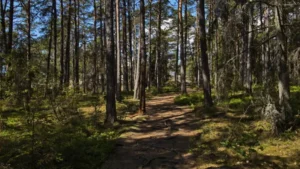
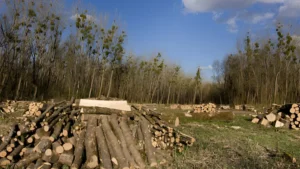
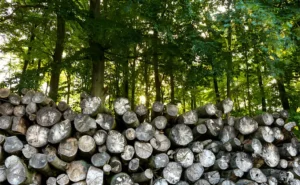


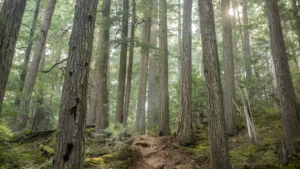


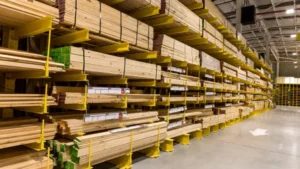


Leave your comment